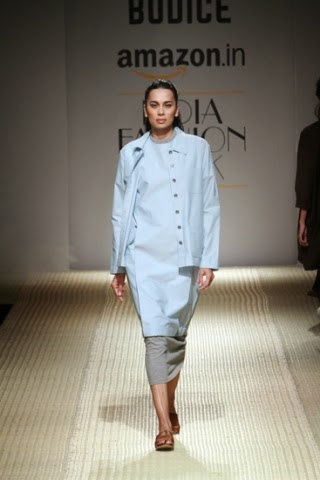Androgyny, minimal chic and a self-assuring temperament as
always were the fundamental and formative parameters for the Bodice A/W 2015
collection by this year’s Vogue Fashion Fund winner Ruchika Sachdeva. Signature
relaxed silhouettes (culottes, shirt dresses-), subdued palettes of brown,
cream-white plus indigo blue and ingenuity in fabric took the centre stage
pertaining to the same. The extra layer however was the introduction of patterns
i.e. polka dots but not your run-of-the-mill polka dots. It was part of the
recurring ingenuous approach Ruchika has applied throughout. This time the
experimentation was with batik and indigo dyeing. The polka dots were done
by hand using wax and then dyed. The use of khadi
and handloom was characteristic.
There is plenty to delve into if you look closely but at the
surface it all might seem the same. The latter is what forms the opposing
argument. There is no doubting the reinvention and intricacy in development but
for some who give the clothes a once-over it might not sail. The DNA of the
label albeit is strongly defined and constantly evolving with strong and
discerning patrons who would inspect and appreciate the extreme detail. How
well does the label break viable commercial ground in the long run will
ascertain gradually.
Images via vogue.in













.jpg)







